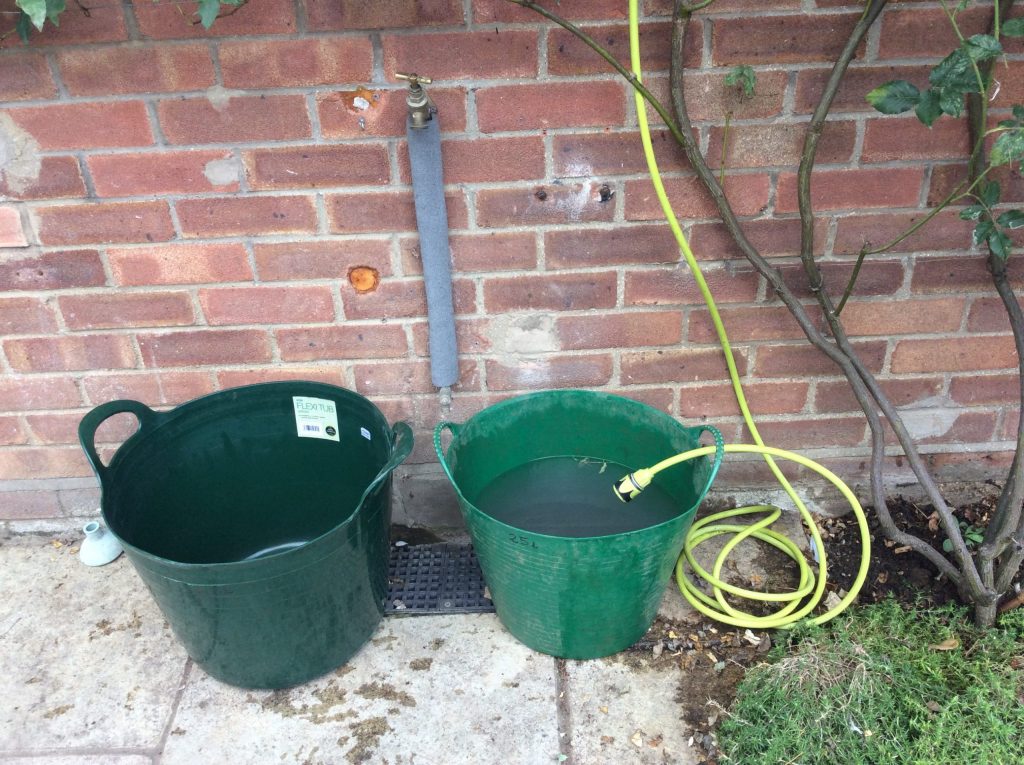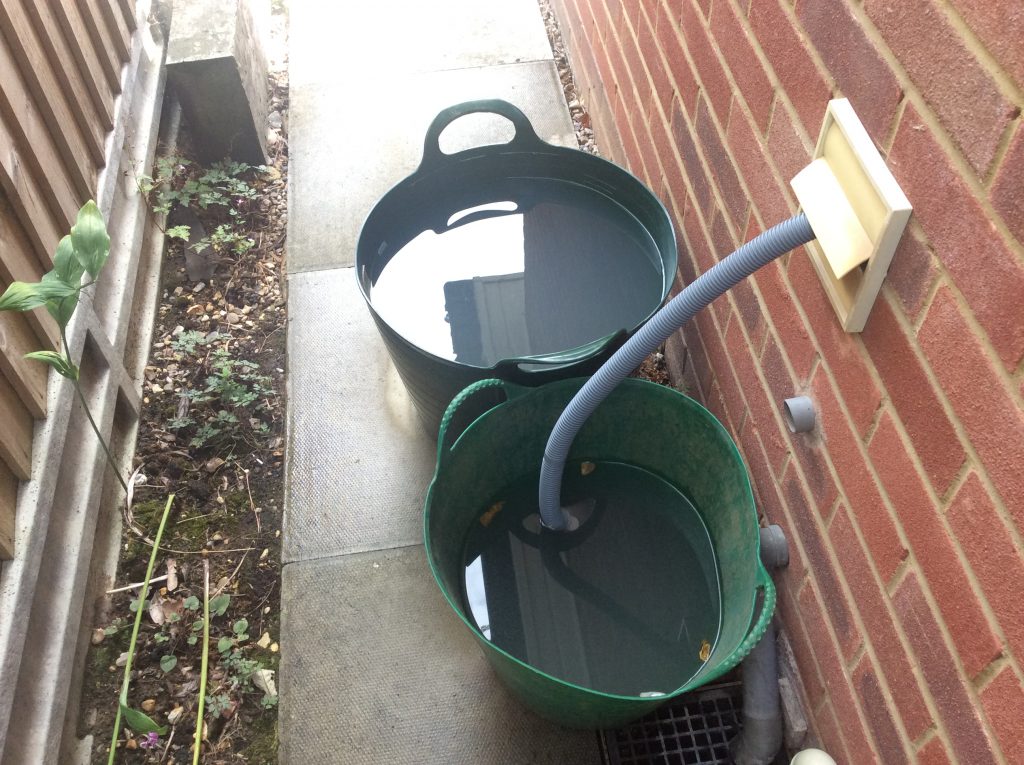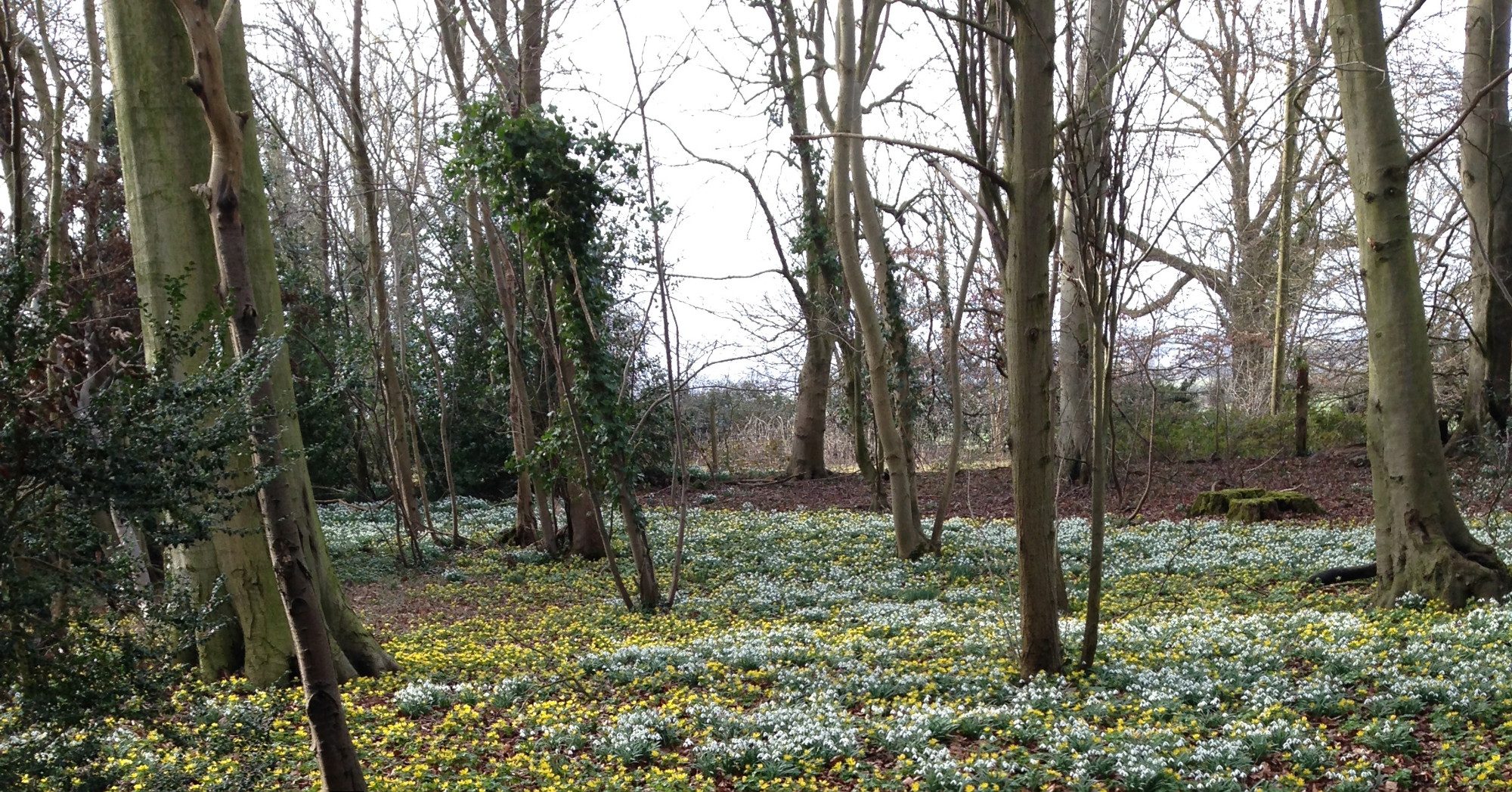As I write this it is pouring with rain on the day the recent drought broke. But the aquifer and our chalk streams have not refilled yet and we are still being urged to save water.
When we moved into our house in Stapleford five years ago we inherited dual flush toilets and a gravity fed shower. We got a couple of water butts, I put in an aerated showerhead, and the washing up water (sometimes) went on the garden. When our youngest child left home use of the shower and washing machine probably halved and I thought we had done quite well with water saving. But the recent drought and heat made me think about what else we could do.
First of all I started collecting the water wasted waiting for the hot tap to run hot – 1L in the kitchen and two in the bathroom. This is clean water and although I don’t use it for drinking it’s fine for cleaning, washing vegetables, watering houseplants etc. The bathroom wash basin is one of those silly big shallow rectangular ones, so I halved the amount of water used for washing by putting a washing up bowl in it. As a bonus, the water could then be used for flushing the toilet. I am still trying to work out just how often a proper flush is needed to stop it getting smelly though. The washing up water always goes on the garden now, but if it’s not very dirty (eg after breakfast) it stays in the sink and gets used for cleaning, soaking the next lot of dishes, or various other purposes first. If it is particularly greasy or has foody bits in it goes to water the compost heap.

Then I started thinking about the shower water. My shower is a time to relax and unwind, important for my mental health as well as hygiene. So I am not prepared to cut it down to 3 minutes (I can’t shower and wash my hair in less than 4 1/2 minutes anyway) but I only shower twice a week and I have found that turning the tap to the minimum functional pressure barely makes a difference. My husband does better, with the ‘Get wet – turn off the shower while you do the soapy stuff – turn it on again to rinse’ technique.
Everything I read about saving water says put the bath or shower water on the garden. But never explains how to get it there! So here is what I have worked out. You need a length of hose long enough to reach from the bath or shower to the garden. One end needs an attachment to fit either a garden tap or a bath tap. When you shower, remember to keep the plug in! Afterwards fill the hose with water from the tap. Then hold the top end underwater near the plug (I weigh it down with one of those 5L cans I collected the hot water in), disconnect the tap and the water will siphon out of the window into a bucket waiting in the garden. Best to let it cool before use on plants though.


Buoyed by this success, I turned my attention to the washing machine. First I actually read the handbook to find out the recommended load size. I believe newer machines will weigh your load for you but mine doesn’t, so I weighed out 3.5 and 7kg loads, and was surprised to find I could wash 17 shirts or 14 bath towels in one load (no, I don’t actually have that many). I only put clothes in the wash when they either look or smell dirty, apart from a few exceptions for hygiene reasons. Altogether I have reduced washing to 5 loads a fortnight. I use BioD biodegradable laundry liquid which is safe to put on the garden. I expected collecting the water to require complicated plumbing, but in fact I simply put the drain hose through a hole already in the outside wall for the previous occupants’ tumble dryer vent, into a waiting bucket. We did have to get a bigger (50L) bucket though, or else you have to be around to keep moving the hose into a succession of smaller containers. (Incidentally, the “rinse hold” function on the washing machine (to stop colour runs and creasing if you can’t empty the machine as soon as it’s finished) does not simply hold the washing in the final rinse water as I had thought, but does a whole extra rinse cycle – of 20L!)

Thinking about what all this has achieved, I have realised that many of my measures are about re-using waste water and not necessarily reducing how much I use in the first place. I have definitely reduced the amount I use in the kitchen by a few litres a day, and the bowl in the bathroom sink has been a significant and easy saver. I used to use some water on the garden, but it now gets much more without my taking any more from the tap and is beginning to bloom and give joy again. It also returns the water to the ground, instead of sending it down our overloaded sewers, another bonus. The water butts are now full, and in winter the garden is partly waterlogged, so what will I do then? I have decided I will concentrate on the measures that reduce water use, such as collecting the cold hot water, and forget about recycling the shower and washing machine water for the season.
I am retired and have the time to lug cans of water around and juggle hoses and buckets, but I am well aware that not everyone could do this or has a garden to use the water. But I hope something I have learned will be of use to someone.
Postscript
I have just read that a medium size data server (“the cloud”) uses as much water for cooling as an 18 hole golf course. So time to rethink my data storage maybe?
Jo Boyle
September 2022

